For the city in Florida, see Saint Petersburg (Florida)
Saint Petersburg (Russian: Санкт-Петерб́ург Sankt-Peterburg), known as Petrograd in 1914-1924 and Leningrad in 1924-1991, is the second largest city of Russia, with 5 million inhabitants, and the former capital of the Russian Empire. Founded in 1703, it is not ancient, but its historical cityscape is remarkably well-preserved. The center of Saint Petersburg occupies numerous islands of the Neva River delta, divided by waterways and connected by huge drawbridges. Since 1991 it and some historical suburbs, including Peterhof, have been listed by UNESCO as a World Heritage Site. It is home to one of the world's largest museums of art, the Hermitage. Many Russians know the city as Piter (Питер), a familiar diminutive of Saint Petersburg.
-VQNeg.medium.jpg) Saint Petersburg was founded by Peter the Great in 1703 on the Neva river, amidst the land he had just conquered from Sweden, outside the area populated then by the Russian people. Pre-planned rather than spontaneous almost from the very beginning, the city, called by Peter "my window on Europe", was designed to look European rather than Russian, and many European architects were invited to work here. As the capital of the Russian Empire from the early 18th century to the early 20th century, the city grew steadily, saw many crucial events of the Russian history, and was a major cultural center. Many world-famous artists, scientists, writers and composers, such as Mendeleev, Dostoevsky and Tchaikovsky, lived and worked here.
Saint Petersburg was founded by Peter the Great in 1703 on the Neva river, amidst the land he had just conquered from Sweden, outside the area populated then by the Russian people. Pre-planned rather than spontaneous almost from the very beginning, the city, called by Peter "my window on Europe", was designed to look European rather than Russian, and many European architects were invited to work here. As the capital of the Russian Empire from the early 18th century to the early 20th century, the city grew steadily, saw many crucial events of the Russian history, and was a major cultural center. Many world-famous artists, scientists, writers and composers, such as Mendeleev, Dostoevsky and Tchaikovsky, lived and worked here.
In 1917 the Russian Revolution started. The significance of Saint Petersburg has declined somewhat after the transfer of the Russian capital to Moscow in 1918, but this allowed its cityscape to remain largely intact to this day. During World War II, the city was besieged by the Wehrmacht for 872 days, resulting in more than a million of civilian losses, mainly from starvation.
The city has undergone several name changes since its founding. Due to the German origins of the name "Saint Petersburg", its name was changed to the more Russian-sounding "Petrograd" in 1914 in the wake of World War I. Subsequently, its name was changed to "Leningrad" in honour of the founding leader of the Soviet Union, Vladimir Ilyich Lenin. It was only in 1991, after the breakup of the Soviet Union that the original name was restored, though the surrounding area remains known as Leningrad Oblast.
Saint Petersburg has almost always been, or at least tried to be a city with strong foreign connections, and this is where its authenticity lies. Don't expect it to be overly indigenous. Matryoshkas and other such souvenirs popular among foreigners have very little to do with its authentic life.
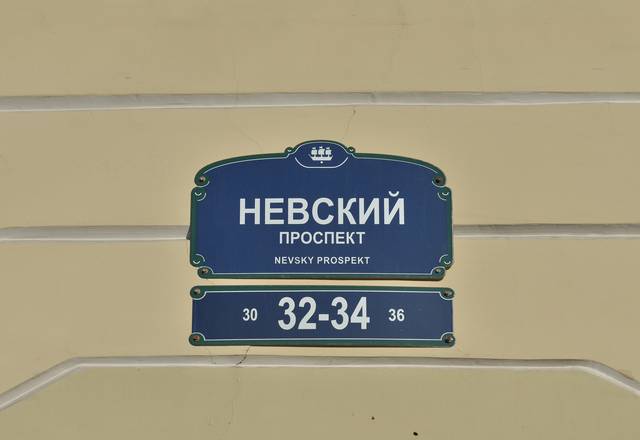 The language spoken in Saint Petersburg is Russian, as in most parts of Russia. English is usually taught in schools and universities, so younger people are supposed to understand it to some extent, but the chance of finding anybody who is fluent in English on the streets is, though better than elsewhere in Russia including Moscow, still not that great. Average people will probably be able to point out a direction, but don't expect much more. The signs and labels in most places, especially off the beaten path, are still in Russian only, with a notable exceptions of metro (subway) and street signs in the city centre. It may be a good idea to get familiar with the Russian Cyrillic alphabet before the travel, as this is easy and lets you recognize street names and so on.
The language spoken in Saint Petersburg is Russian, as in most parts of Russia. English is usually taught in schools and universities, so younger people are supposed to understand it to some extent, but the chance of finding anybody who is fluent in English on the streets is, though better than elsewhere in Russia including Moscow, still not that great. Average people will probably be able to point out a direction, but don't expect much more. The signs and labels in most places, especially off the beaten path, are still in Russian only, with a notable exceptions of metro (subway) and street signs in the city centre. It may be a good idea to get familiar with the Russian Cyrillic alphabet before the travel, as this is easy and lets you recognize street names and so on.
There is a local weekly English-language newspaper, The St. Petersburg Times.
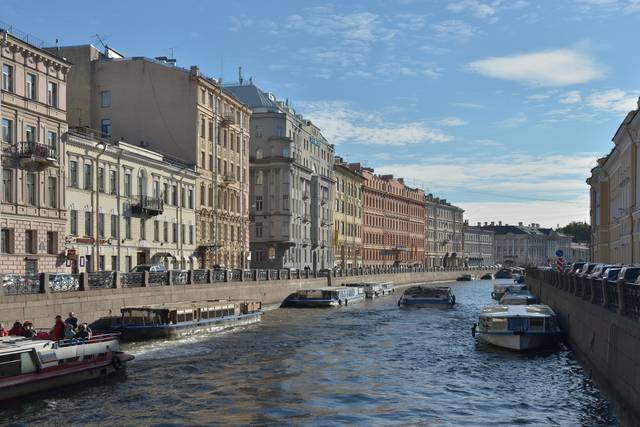
The city's position at 60°N makes for huge seasonal variation in day length. Days are less than 6 hours long at the end of December, but it never gets darker than twilight during the White Nights season in June. Not only are the days very short in late autumn and early winter, but the weather may be overcast for weeks, without a hint of blue sky, which may feel depressing. The driest season with least precipitation is early spring. July and August are usually the rainiest months, though the difference is usually not big enough to worry about. But if you care about this, it is a good idea to have an umbrella or raincoat handy.
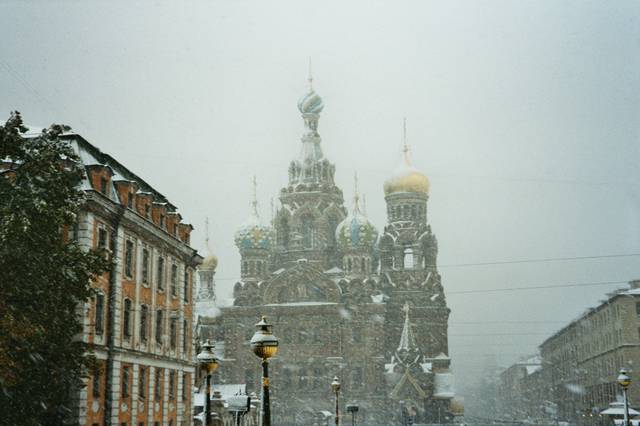 In November–March there are hardly any tourists—even domestic tourists—so you won't see the barest hint of the long lines of the summer at the Hermitage. Saint Petersburg's neoclassical streets are also simply gorgeous in the snow. Temperatures can range from relatively mild, slightly above freezing point, to bitterly cold. From time to time it may get well below the averages, to -25°C (-13F) and below, often with high humidity and wind, so be prepared to dress warmly. Most major tourist attractions (except fountains and all sorts of water transport, of course) are still open and some hotels offer lower prices during this time.
In November–March there are hardly any tourists—even domestic tourists—so you won't see the barest hint of the long lines of the summer at the Hermitage. Saint Petersburg's neoclassical streets are also simply gorgeous in the snow. Temperatures can range from relatively mild, slightly above freezing point, to bitterly cold. From time to time it may get well below the averages, to -25°C (-13F) and below, often with high humidity and wind, so be prepared to dress warmly. Most major tourist attractions (except fountains and all sorts of water transport, of course) are still open and some hotels offer lower prices during this time.
Snow cover persists on average from November till early April (late April in the countryside), with most of it falling during the first half of the winter. Snow is not always removed from streets in time and may exacerbate traffic problems. The danger of slipping may be high in winter, as the surfaces are often covered with ice. Wear good boots, take small steps, and watch your feet! Also beware of icicles falling from roofs.
The rivers and canals are frozen on average from late November till April. Usually from late April till November the Neva is navigable, and during this season most of its huge bridges are drawn up to let ships pass for several hours each night according to a published schedule. This is a spectacular sight during the White Nights, but also a major transport inconvenience.
In April, the sludge resulting from melting snow and the dust which forms when it dries up may get tiresome.
May 9 is Victory Day (День победы) celebrating the Soviet victory over Nazi Germany. This day is marked with an opening military parade on Palace Square, directly in front of the Hermitage, visiting various war monuments, giving flowers to war veterans who are dressed in full military outfits, and an evening parade down Nevsky Prospekt which includes survivors of the Siege of Leningrad.
-IDjEq.medium.jpg) June is peak tourist season during the famous White Nights (roughly 11 June–2 July), when the sun sets only for a brief period of twilight, and the streets stay alive around the clock. The last ten days of June, during the White Nights Festival of all-day performances, concerts, festivals, and parties, are the busiest time of the season and it can be difficult to reserve accommodation and transport. Book early.
June is peak tourist season during the famous White Nights (roughly 11 June–2 July), when the sun sets only for a brief period of twilight, and the streets stay alive around the clock. The last ten days of June, during the White Nights Festival of all-day performances, concerts, festivals, and parties, are the busiest time of the season and it can be difficult to reserve accommodation and transport. Book early.
July and August are usually the warmest months. This is a rather northern city, and it rarely gets really hot, but even more modest warmth can be hard to bear in summer because of the high humidity. Rain showers usually come and go throughout this time, so it is always a good idea for one to have an umbrella or rain jacket at all times, even on sunny clear days.
Late September—early October is a lovely time in the city. The temperatures drop to moderate, often with strong winds, and the tourists are all gone. Rain is still common. Fountains work from May through mid-September. Most trees are in leaf from May through October.
When deciding on the time of your visit, keep in mind the days of school holidays, when museums and other similar venues can become considerably more crowded. School holidays happen in early November, the first half of January and late March. Moreover, general holidays are held around the New Year into early January, as well as in early May.
Keep in mind that New Years is the biggest holiday of the year in Russia. Reserving a hotel room is usually not a problem during this time, but be prepared for very large crowds and noisy celebrations.
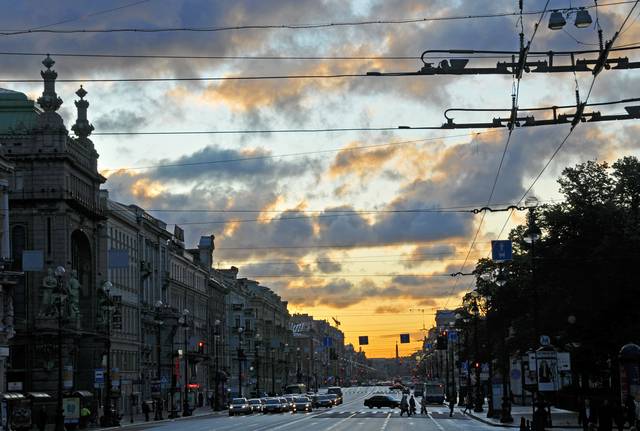
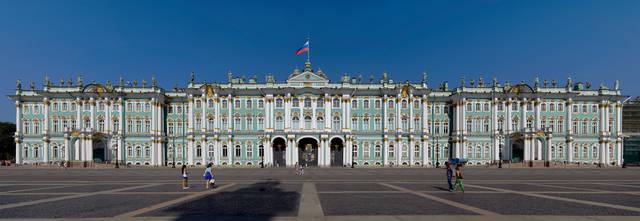
-xjIrN.medium.jpg)
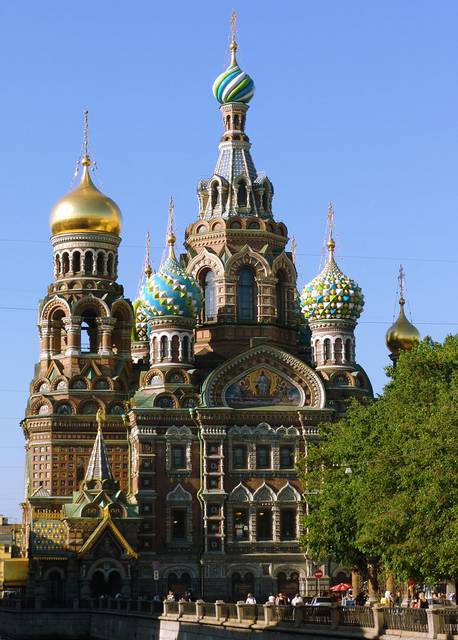
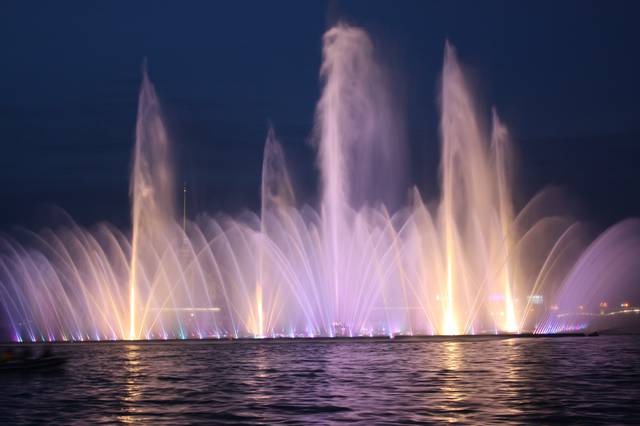
-DYLmO.medium.jpg)
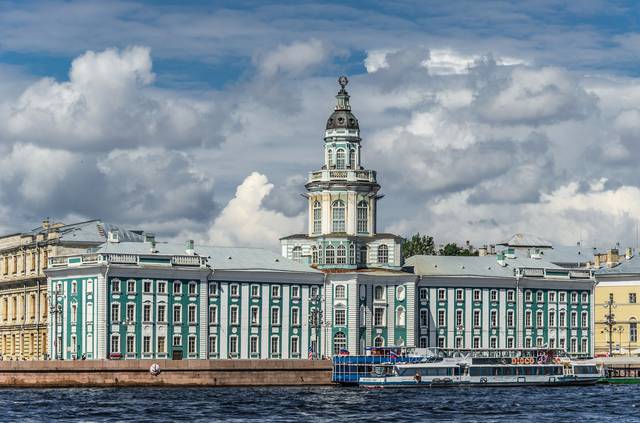
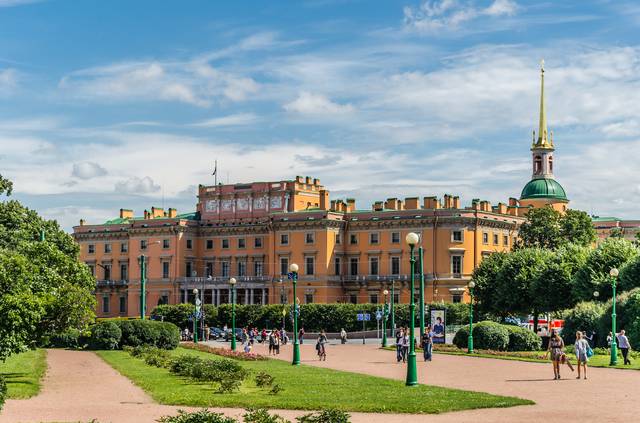
Saint Petersburg is simply put one of the greatest sightseeing cities on earth. No visit can do it justice—you'll have to move here to really be able to see all the sights. Really, budgeting a month of full-time tourism would not be unrealistic. And that's after all dramatic events of the 20th century that took place here! Perhaps only Rome, Paris and London can compare in sheer volume of beautiful, grand things to see.
As the center of the Russian world for 200 years of the Romanov Dynasty, the city reaped the rewards of Peter the Great's impossibly grandiose and tyrannical vision, and the Empire's extreme inequality. The wealth of the wealthy in Imperial Russia was almost unfathomably extreme, and led to the extreme opulence of the palaces and ecclesiastical buildings throughout the city center, as well as the suburban palaces at Peterhof, Gatchina, Strelna, Pushkin, and Pavlovsk. The greatest concentration of sights is found within the huge area of the center inside the Obvodny Canal, along the south embankment of Vasilievsky Island, and in the southern half of Petrogradsky Island.
So, OK, you don't have months to explore the city—what are the highlights? It's a difficult question to answer. The most obvious destination is the Winter Palace on Palace Square (right by the Admiralty and the Bronze Horseman), which houses the Hermitage Museum, and which was the winter residence of the Romanov Tsars and essentially the center of the Russian Imperial government. The Hermitage Museum is easily one of the top five art museums in the world, but even if you don't care about art, wandering around the enormous palace itself is extremely rewarding. The nineteenth century, whimsical Church on the Spilled Blood nearby is another internationally recognized icon of the city, with a spectacular setting on the Griboedov Canal near the Mikhailovsky Garden, and filled—literally filled—with beautiful mosaics.
Speakings of canals, strolling the palace-lined banks of the Moika, the Fontanka, and the Griboedov Canal in the historic center is a must. During the summer months, you can also enjoy this magnificent architecture from the boat by joining any of the popular (albeit expensive) "channel tours," or opt for a budget boat trip along the Neva river on a so-called riverbus, which is a tiny boat zooming along the river on several routes that are integrated into the system of public transport.
In the same neighborhood, walk down Nevsky Prospekt, which serves as Saint Petersburg's main grand avenue for shops (especially the historic mall of Gostiny Dvor), theaters, and another realm of palaces and cathedrals, most notably the massive Kazan Cathedral. The Kazan Cathedral is functioning, so its easier to visit than the other big cathedrals (no lines, entrance fees, etc.). In the same neighborhood, but off Nevsky, are the Square of the Arts, where you'll find the Russian Museum—an absolute can't-miss for art lovers. The Mariinsky Theater is one of the world's most beautiful performance venues, and you should check it out even if you can't see an opera or ballet performance. Mammoth Saint Isaac's Cathedral, with its impressive balcony views, is another obvious sightseeing destination.
Across the Neva River are more can't-miss sights. The Peter and Paul Fortress on the Petrograd Side is easily one of the city's top three attractions. Aside from its sheer beauty, visit it for its immense history as the final resting place of the Romanov Tsars, as well as its role as a notorious prison for the most high-profile political prisoners under their rule. On Vasilievsky Island, you must at least take a taxi over to the Strelka for the views by the Rostral Columns, across the street from the Old Stock Exchange, home to the Naval Museum, surely one of the best of this kind on the planet. Then take another ride along University Embankment before heading back across the river. Better yet, stop along the way at the weird and wonderful Kunstkamera museum of ethnology, home to Peter the Great's bizarre collection of oddities.
Complicating the desire to see the city's highlights in a short period of time are the magnificent suburban palaces at Peterhof, Pushkin, Lomonosov, Strelna, and Pavlovsk. Any tourists who visit Saint Petersburg and don't see neither the Tsarskoye Selo palaces at Pushkin, nor the Bolshoi Palace at Peterhof, really should be a bit ashamed of themselves. It's like going to Paris and skipping Versailles. Of the three, the Pavlovsk Palace would be the least unforgivable to miss, but if you have the time—go.
More time? The center has a world of more sights. Mars Field with the Memorial to the Revolutionary Fighters and the Eternal Flame, the Circus, wonderfully baroque Smolny Cathedral, Peter the Great's Cabin, the rolling parkland of the Tauride Palace and Gardens, Alexander Nevsky Monastery, the Yusupov Palace where Rasputin was killed (if you get the chance to see a performance in the theater inside, jump on it), the neoclassical bust-filled Summer Gardens, Mikhailovsky Castle, the Marble Palace, the small but powerfully heartrending Museum of the Defense and Blockade of Leningrad. Literary buffs should seek out Dostoevsky's local haunts, including the famous "Murder Walk" from Crime and Punishment, which will take you right from Raskolnikov's apartment to the door of the very apartment where the grisly deed was done.
Head back across the river to the Petrograd Side, past the Peter and Paul Fortress, you'll find the Saint Petersburg Mosque, the really impressive Military Museum, the museum-ship of the Cruiser Aurora, the ever... interesting Museum of Political History, and the Botanical Gardens. On Vasilievsky, the whole Neva embankment is filled with great museums and grand buildings. Especially great places to visit (aside from the aforementioned Naval Museum and Kunstkamera) include the Menshikov Palace (run by the Hermitage), the Twelve Collegia, and the Mining Museum. And don't forget to hunt down the some 3,300 year-old sphinx statues from the Theban Necropolis!
Few tourists make it out of the city center, south of the Obvodny Canal and north of Petrogradsky Island, but there are still huge amounts of things to see in the north and south of the city—especially in the south. Southern Saint Petersburg is home to the Narva Triumphal Arch and its sister monument—the Moscow Triumphal Gate, the huge Monument to the Heroic Defenders of Leningrad (which honestly should be one of the main attractions in this city, if not for its distance from the center), Moscow Victory Park, and one of the best examples of Stalinist architecture (more interesting than you'd think) at the House of the Soviets, fronted by a very large Lenin statue. The most wonderful sight in southern Saint Petersburg, though, may be the whimsical, candy cane-colored Chesme Church.
The eastern part of the city (colloquially known as the Right bank) is renowned for its nineteenth century industrial architecture in the districts of Okhta and Porokhovye (former gunpowder factories).
Northern Saint Petersburg is a bit less notable, but adventurous travelers can find some things of interest, especially in the old industrial district around the Finliandskii Station, at the Forestry Academy and Piskaryovskoye Memorial Cemetery for the fallen in the Siege of Leningrad.
No trip to St. Petersburg is complete without seeing an opera or ballet performance. The Mariinsky is perhaps the most well-known institution, but it is by no means the only theater in the city. Tickets are sold throughout the city at kiosks and shops called Teatralnaya Kassa, which charge a nominal (usually about ) fee for "insurance," which is theoretically optional. The theater box offices themselves sell tickets directly, too, and usually for the same price. Sometimes blocks of tickets sell out at the kiosks but tickets are still available at the theater, or vice versa, so it is worth checking both places if you have your heart set on a particular performance. It is possible to take not-so-small children into some performances if you take a private box, although you will need to ask when you buy your tickets.
- Mariinsky Theater, Theater Square (Театральная площадь), 1 (: 2, 3, 6, 27, 71 & : K1, K6K, K169, K306 to stop 'Theater Square', +7 812 326 4141. The Mariinsky Theater (formerly the Kirov, which is the name the troupe still uses when touring abroad) is world-class for both opera and ballet. There are English supertitles for operas sung in Russian; operas in other languages have Russian supertitles. Performances are offered in three halls: the main theater located in the historical building, Mariinsky-2 (the new scene that is located in a futuristic building across Kryukov canal) and the newly-built Mariinsky Concert Hall. Tickets can be purchased on the theater's website. Cavos rebuilt it as an opera and ballet house with the largest stage in the world. With a seating capacity of 1,625 and a U-shaped Italian-style auditorium, the theatre opened on 2 October 1860 with a performance of A Life for the Tsar. The new theatre was named Mariinsky after its imperial patroness, Empress Maria Alexandrovna. .
- Mikhailovskiy Theater, Ploshad Isskustv 1 (Between the Russian Museum and the Grand Hotel Europe, : Nevsky Prospekt (Невский проспект), : К100, +7 812 595 4305. - The exterior is not as recognizable as the Mariinsky, but the interior is nearly as grand, and the theater hosts both Russian and foreign headliners in opera and ballet. It was founded in 1833. It is named after Grand Duke Michael Pavlovich of Russia. .
- St. Petersburg Opera, Galernaya Ul. (Галерная улица), 33 (West of the Bronze Horseman. - From : Sadovaya "Садовая", : Sennaya Ploschad "Сенная площадь" further to stop "Plocshad Truda" : 186, 124, 169. - From : Admiralteyskaya "Адмиралтейская", further to stop "Plocshad Truda" : 22, 3, 27; : 22, 5; : 180, 16, +7 812 312 3982. 12:00-15:00 & 16:00-19:00. An intimate theater (half-sized stage, and only about 150-200 audience seats) which puts on the major repertory operas at a lower price than the major theaters and has a fascinating foyer - one has to see it to believe it. .
- Conservatory Theater, Theater Square (Театральная площадь), 3 (Across the street from the Mariinsky Theater, : Sadovaya «Садовая», : Sennaya Ploschad «Сенная площадь» then - 15-20 min walk. direction to channel Griboyedov or : 1, 67, 124; /: Nevsky Prospekt/Gostiny Dvor «Невский Проспект»/«Гостиный Двор», then - : 3, 22, 27; : 180, 169, 306, +7 921 780-1123 (mobile). While the hall itself is not lavish - quite sterile, really - a good option for seeing Russian and repertory operas cheaply, performed by faculty and students of the conservatory where Tchaikovsky (and many other famous figures from the Russian music world) studied. .
- Hermitage Theater, Dvortsovaya embankment (Дворцовая набережная), 32/34 (Across the Zimnyaya Kanavka (Зимняя канавка) river from the Hermitage Museum, : Admiralteyskaya «Адмиралтейская», : - 15-20 min walk. direction to channel Hermitage Museum or /: Nevsky Prospekt/Gostiny Dvor «Невский Проспект»/«Гостиный Двор», then - : 3, 22, 27; : 180, 169, 306, +7 812 408 10 84. 18:30-22:30. The Hermitage Theater, built as a private home theater of Russian Emperor, used to be Imperial Theatre during more than a century, nowadays is used for almost daily ballet performances, especially during the high-season. .
Mariinsky Theater, Theater Square (Театральная площадь), 1 (: 2, 3, 6, 27, 71 & : K1, K6K, K169, K306 to stop 'Theater Square', +7 812 326 4141. The Mariinsky Theater (formerly the Kirov, which is the name the troupe still uses when touring abroad) is world-class for both opera and ballet. There are English supertitles for operas sung in Russian; operas in other languages have Russian supertitles. Performances are offered in three halls: the main theater located in the historical building, Mariinsky-2 (the new scene that is located in a futuristic building across Kryukov canal) and the newly-built Mariinsky Concert Hall. Tickets can be purchased on the theater's website. Cavos rebuilt it as an opera and ballet house with the largest stage in the world. With a seating capacity of 1,625 and a U-shaped Italian-style auditorium, the theatre opened on 2 October 1860 with a performance of A Life for the Tsar. The new theatre was named Mariinsky after its imperial patroness, Empress Maria Alexandrovna. .
Mikhailovskiy Theater, Ploshad Isskustv 1 (Between the Russian Museum and the Grand Hotel Europe, : Nevsky Prospekt (Невский проспект), : К100, +7 812 595 4305. - The exterior is not as recognizable as the Mariinsky, but the interior is nearly as grand, and the theater hosts both Russian and foreign headliners in opera and ballet. It was founded in 1833. It is named after Grand Duke Michael Pavlovich of Russia. .
St. Petersburg Opera, Galernaya Ul. (Галерная улица), 33 (West of the Bronze Horseman. - From : Sadovaya "Садовая", : Sennaya Ploschad "Сенная площадь" further to stop "Plocshad Truda" : 186, 124, 169. - From : Admiralteyskaya "Адмиралтейская", further to stop "Plocshad Truda" : 22, 3, 27; : 22, 5; : 180, 16, +7 812 312 3982. 12:00-15:00 & 16:00-19:00. An intimate theater (half-sized stage, and only about 150-200 audience seats) which puts on the major repertory operas at a lower price than the major theaters and has a fascinating foyer - one has to see it to believe it. .
Conservatory Theater, Theater Square (Театральная площадь), 3 (Across the street from the Mariinsky Theater, : Sadovaya «Садовая», : Sennaya Ploschad «Сенная площадь» then - 15-20 min walk. direction to channel Griboyedov or : 1, 67, 124; /: Nevsky Prospekt/Gostiny Dvor «Невский Проспект»/«Гостиный Двор», then - : 3, 22, 27; : 180, 169, 306, +7 921 780-1123 (mobile). While the hall itself is not lavish - quite sterile, really - a good option for seeing Russian and repertory operas cheaply, performed by faculty and students of the conservatory where Tchaikovsky (and many other famous figures from the Russian music world) studied. .
Hermitage Theater, Dvortsovaya embankment (Дворцовая набережная), 32/34 (Across the Zimnyaya Kanavka (Зимняя канавка) river from the Hermitage Museum, : Admiralteyskaya «Адмиралтейская», : - 15-20 min walk. direction to channel Hermitage Museum or /: Nevsky Prospekt/Gostiny Dvor «Невский Проспект»/«Гостиный Двор», then - : 3, 22, 27; : 180, 169, 306, +7 812 408 10 84. 18:30-22:30. The Hermitage Theater, built as a private home theater of Russian Emperor, used to be Imperial Theatre during more than a century, nowadays is used for almost daily ballet performances, especially during the high-season. .
- Alexandrinsky Theatre or Russian State Pushkin Academy Drama Theater, Ostrovsky Square(площадь Островского), 6 (and : Gostinyy Dvor (Гостиный двор), +7 812 570-7794. 12:00-14:00 & 15:00-19:00.
- Baltic House Festival Theatre, Alexandrovsky Park, 4 (Gorkovskaya (Горьковская), +7 812 232-3539. 11:00-19:00.
- Saint Petersburg Comedy Theatre, Nevsky Prospect (Невский проспект), 56 (and : Gostinyy Dvor, +7 812 312-4555. Cash desks 11:30-15:00 & 16:00-19:30.
- Komedianty Theatre, Ligovsky Prospect (Лиговский проспект), 44 (: Ploshchad Vosstaniya (Площадь Восстания), +7 812 572-1004. Founded in 1989
- Komissarjevsky Theatre, Italyanskaya Street, 19 (and : Gostinyy Dvor (Гостиный двор), and : Nevsky Prospekt "Невский проспект", +7 812 315 53 55. W-M 11:00-15:00 & 16:00-19:00. The drama and comedy company was founded by actress Vera Komissarzhevskaya in 1901. In The Passage (магазин "Пассаж", Passazh), elite department store
- Lensoviet Academic Theatre, Pr. Vladimirski (Владимирский пр.), 12 (and : "Владимирская", and : Dostoevskaya "Достоевская", and : Mayakovskaya "Маяковская", +7 812 713-2191. 11:00-19:00. In the former Korssakov family mansion. The resident company was founded as the Young Theatre in 1929, then renamed the New Theatre in 1933, and finally the Leningrad Soviet Theatre in 1939.
- Liteiny Theatre, Liteinyi Prospect (Литейный проспект), 51 (: Mayakovskaya "Маяковская" 0.8km, : Gostinyy Dvor (Гостиный двор) 0.9km; : 15, : 8, 15, 3; : К258, К177, К90, +7 812 273-5335. In 1993 the Liteinyi's theatre troupe toured America with a production of George Bernard Shaw's Great Catherine in Russian.
- Na Neve Theatre, Sovetskiy Pereulok (Советский переулок), 5 (Tekhnologichesky Institut (Технологический институт) 0.6km NE, +7 812 251-2006. The theatre was opened in 1987
- Ostrov Theatre, Kamennoostrovskiy prospekt (Каменноостровский проспект), 26-28 (Gorkovskaya «Горьковская». : 46, 76, 183, 223, 30. : 46, 76, +7 812 346-3810. Ticket office: W-Th 14.00-19.30, F-Su 14.00-19.00; All performances start at 19:00. In the former Benois House.
- Tovstonogov Bolshoi Drama Theater, Naberezhnaya Reki Fontanki (наб. реки Фонтанки), 65 (Spasskayav (Спасская)) Sennaya Ploschad (Сенная площадь) 0.6km W, +7 812 310-9242, +7 812 310-7687 (ticket desk). Daily 11.00-15.00 & 16.00-19.00. Formerly known as Gorky Bolshoi Drama Theater (Russian: Большой Драматический Театр имени Горького) (1931–1992), often referred to as the Bolshoi Drama Theater and by the acronym BDT (Russian: БДТ), is a theater in Saint Petersburg, that is considered one of the best Russian theaters
- Zazerkalie theatre, Rubinstein Street (улице Рубинштейна), 13 (: Vladimirskaya 'Владимирская', Dostoevskaya 'Достоевская', +7 812 712-4393. The theatre appeared in August 1987 and was named after the Lewis Carroll's "Through the Looking-Glass, and What Alice Found There". The Children’s experimental theatre “Zazerkalie” appeared in 1992.
- Youth Theatre on the Fontanka, Naberezhnaya Reki Fontanki (Набережная реки Фонтанки), 114 (: Tekhnologichesky Institut 'Технологический институт', further by walk or : К3, К36, К115, К124, К186, К213, К350 to stop 'Naberezhnaya Fontanki', +7 812 316-6564. Daily 12.00-15.00 & 15.40-20.00. It plays Russian classic plays in the winter seasons and hosts a rock concert in the summer. .
Alexandrinsky Theatre or Russian State Pushkin Academy Drama Theater, Ostrovsky Square(площадь Островского), 6 (and : Gostinyy Dvor (Гостиный двор), +7 812 570-7794. 12:00-14:00 & 15:00-19:00.
Baltic House Festival Theatre, Alexandrovsky Park, 4 (Gorkovskaya (Горьковская), +7 812 232-3539. 11:00-19:00.
Saint Petersburg Comedy Theatre, Nevsky Prospect (Невский проспект), 56 (and : Gostinyy Dvor, +7 812 312-4555. Cash desks 11:30-15:00 & 16:00-19:30.
Komedianty Theatre, Ligovsky Prospect (Лиговский проспект), 44 (: Ploshchad Vosstaniya (Площадь Восстания), +7 812 572-1004. Founded in 1989
Komissarjevsky Theatre, Italyanskaya Street, 19 (and : Gostinyy Dvor (Гостиный двор), and : Nevsky Prospekt "Невский проспект", +7 812 315 53 55. W-M 11:00-15:00 & 16:00-19:00. The drama and comedy company was founded by actress Vera Komissarzhevskaya in 1901. In The Passage (магазин "Пассаж", Passazh), elite department store
Lensoviet Academic Theatre, Pr. Vladimirski (Владимирский пр.), 12 (and : "Владимирская", and : Dostoevskaya "Достоевская", and : Mayakovskaya "Маяковская", +7 812 713-2191. 11:00-19:00. In the former Korssakov family mansion. The resident company was founded as the Young Theatre in 1929, then renamed the New Theatre in 1933, and finally the Leningrad Soviet Theatre in 1939.
Liteiny Theatre, Liteinyi Prospect (Литейный проспект), 51 (: Mayakovskaya "Маяковская" 0.8km, : Gostinyy Dvor (Гостиный двор) 0.9km; : 15, : 8, 15, 3; : К258, К177, К90, +7 812 273-5335. In 1993 the Liteinyi's theatre troupe toured America with a production of George Bernard Shaw's Great Catherine in Russian.
Na Neve Theatre, Sovetskiy Pereulok (Советский переулок), 5 (Tekhnologichesky Institut (Технологический институт) 0.6km NE, +7 812 251-2006. The theatre was opened in 1987
Ostrov Theatre, Kamennoostrovskiy prospekt (Каменноостровский проспект), 26-28 (Gorkovskaya «Горьковская». : 46, 76, 183, 223, 30. : 46, 76, +7 812 346-3810. Ticket office: W-Th 14.00-19.30, F-Su 14.00-19.00; All performances start at 19:00. In the former Benois House.
Tovstonogov Bolshoi Drama Theater, Naberezhnaya Reki Fontanki (наб. реки Фонтанки), 65 (Spasskayav (Спасская)) Sennaya Ploschad (Сенная площадь) 0.6km W, +7 812 310-9242, +7 812 310-7687 (ticket desk). Daily 11.00-15.00 & 16.00-19.00. Formerly known as Gorky Bolshoi Drama Theater (Russian: Большой Драматический Театр имени Горького) (1931–1992), often referred to as the Bolshoi Drama Theater and by the acronym BDT (Russian: БДТ), is a theater in Saint Petersburg, that is considered one of the best Russian theaters
Zazerkalie theatre, Rubinstein Street (улице Рубинштейна), 13 (: Vladimirskaya 'Владимирская', Dostoevskaya 'Достоевская', +7 812 712-4393. The theatre appeared in August 1987 and was named after the Lewis Carroll's "Through the Looking-Glass, and What Alice Found There". The Children’s experimental theatre “Zazerkalie” appeared in 1992.
Youth Theatre on the Fontanka, Naberezhnaya Reki Fontanki (Набережная реки Фонтанки), 114 (: Tekhnologichesky Institut 'Технологический институт', further by walk or : К3, К36, К115, К124, К186, К213, К350 to stop 'Naberezhnaya Fontanki', +7 812 316-6564. Daily 12.00-15.00 & 15.40-20.00. It plays Russian classic plays in the winter seasons and hosts a rock concert in the summer. .
- Circus Ciniselli, Naberezhnaya Reki Fontanki ( Набережная реки Фонтанки), 3 (and : Gostinyy Dvor (Гостиный двор) 0.5km, +7 812 570-5198. Daily 11:00-15:00, 16:00-19:00. It was the first stone-built circus in Russia; it is situated beside the Fontanka.Opened on 26 December 1877, with a large stage (13m in diameter) and stables (housing 150 horses). The architect was Vasily Kenel. .
Circus Ciniselli, Naberezhnaya Reki Fontanki ( Набережная реки Фонтанки), 3 (and : Gostinyy Dvor (Гостиный двор) 0.5km, +7 812 570-5198. Daily 11:00-15:00, 16:00-19:00. It was the first stone-built circus in Russia; it is situated beside the Fontanka.Opened on 26 December 1877, with a large stage (13m in diameter) and stables (housing 150 horses). The architect was Vasily Kenel. .
The music scene in St. Petersburg is diverse, with several classical, jazz, and pop concerts to choose from each week. Tickets are available at the same Teatralnaya Kassa locations as ballet and opera tickets, although tickets to pop concerts - especially US and European stars on tour - sometimes use exclusive distributors. For pop and rock concerts, unless you buy tickets for the dance floor (tanzpol), you are expected to sit quietly in your seat as if you were at a ballet - ushers are vigilant about keeping the audience from standing up, dancing, or cheering (polite applause is allowed, but that's about all).
Several of the ballet and opera theaters above also offer orchestral and recital performances, so those are not repeated below. Also, don't forget the many small clubs where up and coming bands play.
- Saint Petersburg Philharmonia Grand Hall, Mikhailovskaya Ul.(Михайловская улица) 2 (Entrance across from the Grand Hotel Europe, : Nevskiy prospekt, +7 812 710-4290. Cash desks 11:00-15:00 & 16:00-20:00. The orchestra established in 1802. The Bolshoi Zal (large hall) of this building is one of the best known music halls in Russia. The building that houses the Philharmonia was completed 1839. Architect: P. Jacot; and Facade design: C. Rossi. - A world-class orchestra which records and tours abroad. The Small Hall (Maliy Saal) hosts excellent chamber music performances and recitals. .
- St. Petersburg Philharmonic Small Hall, Nevsky Prospekt (Невский проспект), 30 (: Nevskiy prospekt, +7 812 571-8333. Cash desks 11:00-15:00 & 16:00-19:00. The Small Hall (Maliy Saal) of the Philharmonic hosts excellent chamber music performances and recitals.
- Jazz Philharmonic Hall, Zagorodnyy prospekt (Загородный пр.), 27 (South of Nevsky Prospekt, use : Vladimirskaya 'Владимирская' or : 16, +7 812 764-8565. Cash desks: Daily 14:00-20:00. Offers a variety of jazz performances several times per week. .
- Ice Palace, prospekt Pyatiletok (Проспект Пятилеток), 1 (: Prospekt Bolshevikov 'Проспект Большевиков', +7 812 718-6620. Cash desks: Daily 11:00-20:00. It was built for the 2000 Ice Hockey World Championships and opened in 2000 & cost USD 60 million. It holds 12,300 people. One of several sports arenas that also serves as a concert hall for pop and rock concerts. .
- Oktyabrskiy Big Concert Hall, Ligovskiy Prospekt (Лиговский проспект), 6 (: Ploshad Vosstaniya 'Площадь Восстания', +7 812 275-1300. M-F 11:00-20:00; Sa Su 11:00-19:00. For Pop and rock concerts and for performance of variety actors and also dancing and ballet collectives in an auditorium. .
Saint Petersburg Philharmonia Grand Hall, Mikhailovskaya Ul.(Михайловская улица) 2 (Entrance across from the Grand Hotel Europe, : Nevskiy prospekt, +7 812 710-4290. Cash desks 11:00-15:00 & 16:00-20:00. The orchestra established in 1802. The Bolshoi Zal (large hall) of this building is one of the best known music halls in Russia. The building that houses the Philharmonia was completed 1839. Architect: P. Jacot; and Facade design: C. Rossi. - A world-class orchestra which records and tours abroad. The Small Hall (Maliy Saal) hosts excellent chamber music performances and recitals. .
St. Petersburg Philharmonic Small Hall, Nevsky Prospekt (Невский проспект), 30 (: Nevskiy prospekt, +7 812 571-8333. Cash desks 11:00-15:00 & 16:00-19:00. The Small Hall (Maliy Saal) of the Philharmonic hosts excellent chamber music performances and recitals.
Jazz Philharmonic Hall, Zagorodnyy prospekt (Загородный пр.), 27 (South of Nevsky Prospekt, use : Vladimirskaya 'Владимирская' or : 16, +7 812 764-8565. Cash desks: Daily 14:00-20:00. Offers a variety of jazz performances several times per week. .
Ice Palace, prospekt Pyatiletok (Проспект Пятилеток), 1 (: Prospekt Bolshevikov 'Проспект Большевиков', +7 812 718-6620. Cash desks: Daily 11:00-20:00. It was built for the 2000 Ice Hockey World Championships and opened in 2000 & cost USD 60 million. It holds 12,300 people. One of several sports arenas that also serves as a concert hall for pop and rock concerts. .
Oktyabrskiy Big Concert Hall, Ligovskiy Prospekt (Лиговский проспект), 6 (: Ploshad Vosstaniya 'Площадь Восстания', +7 812 275-1300. M-F 11:00-20:00; Sa Su 11:00-19:00. For Pop and rock concerts and for performance of variety actors and also dancing and ballet collectives in an auditorium. .
Most cinemas in St. Petersburg show Hollywood films dubbed in Russian. Art cinemas like Dom Kino often show independent American or British movies subtitled in Russian. DVDs of American/European films are also often dubbed. There have been crackdowns on sellers of bootleg DVDs, so it may be difficult or expensive to find DVDs in English these days. There are several DVD stores in the city - often near Metro stations - and it is worth asking about films in English.
Annual Message to Man international documentary, short, and animated films festival takes place in June or July, screening many films in English.
- Dom Kino, Karavannaya Ulitsa (Караванная улица), 12 (: Gostinyy Dvor (Гостиный двор), +7 812 314 5614. Sometimes shows films in their original language. .
- Avrora Cinema, Nevsky Prospekt (Невский проспект), 60 (: Nevskiy prospekt, +7 812 942-80-20. Daily 11:00-20:00. .
Dom Kino, Karavannaya Ulitsa (Караванная улица), 12 (: Gostinyy Dvor (Гостиный двор), +7 812 314 5614. Sometimes shows films in their original language. .
Avrora Cinema, Nevsky Prospekt (Невский проспект), 60 (: Nevskiy prospekt, +7 812 942-80-20. Daily 11:00-20:00. .
A tour of the canals by boat is a great way to see the city in the summer. The typical tour is through the Moika, out to the Neva to see the Peter and Paul Fortress and the Cruiser Aurora, then in through the Fontanka (sometimes as far as the Mariinsky Theater). Tours start at many points along the route and return to their starting point - hawkers for different boat companies abound - and the boats may or may not have a cafe and toilet on board. Almost all tours are in Russian. seems to be the average price.
- Anglotourismo Boat Tours, Naberezhnaya reki Fontanki, 21 (: Gostinyy Dvor (Гостиный двор), +7 921 989 4722. Tours at 11:00, 13:00, 15:00, 17:00, 19:00, 21:00, 00:20. Canal boat tours in English, departing from near the Anichkov Bridge (Nevksy Prospekt and Fontanka) in season (May 7 - Sept 30)., Students:.
Anglotourismo Boat Tours, Naberezhnaya reki Fontanki, 21 (: Gostinyy Dvor (Гостиный двор), +7 921 989 4722. Tours at 11:00, 13:00, 15:00, 17:00, 19:00, 21:00, 00:20. Canal boat tours in English, departing from near the Anichkov Bridge (Nevksy Prospekt and Fontanka) in season (May 7 - Sept 30)., Students:.
Watch football: FC Zenit Saint Petersburg play in the Russian Premier League, the top tier of Russian football. Their home ground is Krestovsky Stadium, on Krestovsky island 10 km north of city centre. Take Metro M3 (Green Line) west towards Begovaya and get off at Novokrestovskaya. The stadium will host matches at the upcoming Euro 2020 tournament.
There are plenty of ATMs and legit currency exchange booths. Do not exchange money on the street: the rate won't be any better, and you run a high risk of encountering any of numerous scams.
Small cornerstores are not necessarily more expensive than larger stores.
Churches often have small souvenir/religious shops with a large variety of items.
The famous place to shop is of course on Nevsky Prospekt in the Center. The streetfront shops there, Passazh, and the historic mall at Gostiny Dvor skew upscale, but there are street markets just off Nevsky, most notably Apraksin Dvor (south on Sadovaya from Gostiny Dvor) where you can get anything on the cheap (especially cheap if you speak Russian).
Luxury shopping with world-class brands is available in two places in St. Petersburg: DLT luxury multi-brand store and Staronevsky fashion district. Due to the difference in exchange rates, prices for some positions may be better than in Milan. The staff at the luxury stores speak English (always) and Chinese (often)
Hot Russian crepes (bliny/блины) match excellently with caviar, mushrooms, caramel, berries, or what have you with a cup of tea on a cold winter street. Teremok (Теремок) is the street-corner kiosk "chain" for bliny but it now has indoor fast food spots around the city, along with Chainaya Lozhka (Чайная ложка) and U Tyoshi Na Blinakh (У тёщи на блинах).
The other really tasty local offerings for street food/fast food include pirozhki, shawarma (шаверма), and pyshki (пышки). Pirozhki are fried buns stuffed usually with beef, vegetables, potatoes, and mushrooms, and are easy enough to find, but not quite as widespread as in Moscow. Shawarma is a decidedly Saint Petersburg phenomenon (you won't find much of it in other Russian cities), served mostly by Azeris, and is everywhere—in cafes and on the street. Pyshki are Russian doughnuts, wonderful with coffee, and are strongly associated with Saint Petersburg.
For restaurant dining, offerings are diverse. A pretty unique place to eat Russian cuisine would be the attractive restaurant on the grounds of the Peter and Paul Fortress. International, Western European, Asian fusion (Russified Chinese food is really good, but requires a culinary dictionary to order), etc. are just as easy to find as Russian, and sushi is very popular. Some of the most exciting food to try comes from the former Soviet Republics. Georgian cooking, despite its obscurity, is one of the world's great cuisines, and should not be missed. The Central Asian (usually Uzbek) restaurants are a lot of fun too.
The city acts as a beer destination for Moscovites visiting St. Petersburg for business or vacation reasons - hence its pubs frequently have a much wider choice of beers than an average pub in Moscow (not to mention other cities in Russia). St.Petersburg, being the fatherland of the most popular beer in Russia — Baltika (Балтика), is considered the beer capital of the country, while Moscow is more of a Vodka Capital. Baltika, by the way, comes in a large variety of numbers. Numbers 7 and 8 (seem-YORK-uh, vahs-MYOR-kuh) are the most popular: seven is a lager, eight is a Hefeweizen-style wheat beer.
Saint Petersburgers know how to party. There is a wide and excellent selection of great clubs that will satisfy all tourists looking to spend the night out. The city hosts clubs of all music. Rock, pop, jazz, hip hop/RnB, and a lot more.
Because of the difficulty in operating gay clubs and the social stigma associated with visiting gay clubs, many young men prefer to use gay iPhone applications like Hornet, Grindr and Tinder to arrange to meet at coffee shops and more discreet locations. This change in technology and the new political issues in St. Petersburg is transforming how gays meet, from nighttime dark watering holes to public straight venues during the day. At the same time, there are several small, rather dirty gay clubs in the city: The Central Station (Центральная станция), Priscilla/Blue Oyster (Присцилла/Голубая устрица), Cabaret (Кабаре) and Malevich (Малевич).
For information on using telephones and buying SIM cards in Russia, see Russia#Connect.
The emergency service number is 112.
Free WiFi is available in most hotels, cafes, restaurants, bars, and shopping centers.
There are many computer clubs/internet cafes, usually crowded by kids playing CounterStrike.
- CafeMax, Nevsky Prospekt 90-92 (Metro: Mayakovskaya or Ploschad Vossitanya, +7 812 273 6655. 24 hours per day. A cheap internet cafe with printer access. Will print items, such as train tickets purchased online, if the file is emailed to the attendant.
CafeMax, Nevsky Prospekt 90-92 (Metro: Mayakovskaya or Ploschad Vossitanya, +7 812 273 6655. 24 hours per day. A cheap internet cafe with printer access. Will print items, such as train tickets purchased online, if the file is emailed to the attendant.
Policemen & bureaucrats. For any Western traveller disturbing the system, permission to visit the country can be refused at the border. The average street policeman usually cannot speak any foreign language, but if you look like a tourist, you could be a target for money income source. Don't panic! Always ask for a receipt and the names of the officers.
Saint Petersburg has a somewhat undeserved reputation for being a dangerous city. Things have calmed down since the Wild West (or Wild East) days immediately after the collapse of the Soviet Union, but some common sense is still required.
Take care of money, documents, cameras, mobile phones, and anything of value because of pickpocketing. Especially watch out on the Metro during busy times, as people start pushing at the train doors, and pickpockets are frequent, particularly (but not only) at Gostinyy Dvor Metro Station. When riding the Metro, keep in mind that robbery can be a real threat; you should constantly watch what is going on around you and who is standing very close to you. Nevsky Prospekt and nearby markets are also pickpocket hangouts.
Theft of photo equipment is really a big problem in Saint Petersburg. Photo bags probably won't save your camera—it can be opened in less than 5 seconds; the straps can be slashed with a knife even more quickly. Cameras should be kept in bags slung across the body at all times, with your hands keeping a firm grip on them, and no watches or jewelry should be visible at all. Quite obviously, do not show in public that you have a lot of money. Robberies are not uncommon, and many foreigners have been threatened at gun and knife point. However, foreigners are not targeted specifically, and robbers will attack both foreigners and natives that carelessly reveal their wealth.
As with most other major cities, avoid traveling alone at night, and do not get into altercations with drunks. If traveling at night, it is recommended to stay on the main sidewalks and avoid any dark alleys or yards.
Downtown and western parts of the city are safest. Suburbs like Kupchino, Veteranov and Ligovo are struggling with criminality and poverty.
As a general rule, the farther you are from the city center, the more dangerous it is.
Gangs are a problem, although mafia gang wars are unlikely to affect tourists. Some gangs, however, such as neo-Nazis or angry hooligans, are out looking for problems and commit crimes that can affect tourists. Hatred toward people with darker complexions is not uncommon, and neo-Nazism is a concern. St. Petersburg, and Russia in general, can be regarded as a seriously dangerous destination for tourists of darker complexions so travelling in groups is highly advised.
Saint Petersburg's football club, Zenit Saint Petersburg, is one of the biggest clubs in the country, and has its own band of hooligans. If you decide to visit the football stadium to watch the club play, you should buy tickets to center sectors. If you do not do this and a fight starts, you are likely to get dragged into it by either the hooligans or the police, since both will think you are part of the brawl.
Take special care on Nevsky Prospekt, particularly the area with the city tour buses, a favorite spot of pickpockets and particularly of those after photo equipment. On the bright side, "Nevsky Prospekt" sees little mugging.
Russian driving is wild. Drivers attack their art with an equal blend of aggressiveness and incompetence. Guidelines are lax and rarely followed. As a pedestrian, take care when crossing the roads, since it might be difficult for drivers to notice you. If you are thinking of driving yourself, bear in mind that the local traffic police are corrupt, but this issue has improved drastically. Pedestrian crossings with a traffic light are quite safe to use, most car drivers will stop.
Bar fights do occur. In the center of the city and around Nevsky Prospekt, they are rare. However, in the suburbs and local cheaper pubs, fights occur almost daily. If you are staying with locals living in these areas, it might be a good idea to avoid these bars. Police are unlikely to show up as they consider fights as small, unimportant, regular and a waste of time, and they will probably laugh at you for calling.
Gypsy cabs are ubiquitous and a little risky; never take one lingering near bars/clubs where expatriates and tourists congregate.
Saint Petersburg has a relatively big problem with street children who make their living out of stealing. They can be a hassle and can beg you aggressively. Act like any other Russian would: say no, then just ignore them and go away. If they start touching you, be very firm in pushing them away.
Gay travelers must practice extreme caution while staying in Saint Petersburg, as attacks often occur. Many Russian people look upon public demonstrations of homosexuality with undisguised contempt. It is advised to not openly display one's sexuality.
Another subtle danger that can affect your trip is the inevitable effect of winter weather. Poor harvesting of snow and ice is a big problem in city. Caution is advised in snowy winters because of falling ice from roofs, and pedestrians should pay special attention to ice on the streets. Snow on marble is very, very slippery—take small steps and watch your feet!
St. Petersburg regularly experienced floods during its history, sometimes catastrophic. However, the construction of the preventive dam has been completed, and catastrophic floods are unlikely to happen again.
Overall, be warned that if you are used to living in the US and/or Western Europe, Saint Petersburg, as well as the rest of Eastern Europe, will seem different, and, at times, a bit intimidating. On the other hand, Russian people are usually friendly, welcoming and interested towards foreigners, and nothing should happen to you unless you put yourself in harm's way. If you don't care about them they don't care about you, and nothing should get in your way of having a great holiday.
The below private hospitals have English-speaking Russian doctors (very few, if any, hospital staff are expats). Depending on the type of service provided and the terms of one's insurance policy, these hospitals may be able to arrange direct billing with European and American medical insurance companies.
- American Medical Clinic, Moyka Embankment 78 (Just west of St. Isaac's Square, : Admiralteyskaya 'Адмиралтейская' or : Sadovaya 'Садовая', +7 812 740 2090. 24 hours. Includes dental clinic and pediatric unit. Consultation from.
- Euromed, Suvorovsky Prospekt (Суворовский пр.)60 (: Chernyshevskaya 'Чернышевская', further To stop Tulskaya ulitsa : 22, 22a, 136; : K15, K76, +7 812 327 0301. 24 hours. Multi-specialty medical center that provides a full range of medical services,applying international standards and protocols of diagnostics and treatment. Includes its own laboratory and pharmacy units, in-patient department with comfortable 5-star hotel class wards, ambulance team. English-speaking personnel provides direct insurance billing and any administrative support to the patient (accommodation, visas, transfers, medical evacuations).
- MEDEM, Ulitsa Marata (ул. Марата) 6 (: Mayakovskaya 'Маяковская', +7 812 336 3333. 24 hours. Includes dental clinic, pediatric unit, and other services. Consultation.
The city's water-system is not ideal because of a number of old pipes and as a result does not provide 100% clean water (too much heavy metals). Some locals boil or also filter tap water before use; you might want to buy it bottled if water quality affects you. It's germ free, though, so brushing your teeth with it is fine—it's just not great for drinking. Cold water is cleaner than hot. No hot water for 1-3 weeks every summer.
There are numerous public toilets, most of which are attended by a person who will charge about for entry. Toilet paper is not always provided. The toilets are typically extremely dirty by Western standards. If you are a Westerner, you can get away with wandering into the Western hotels, which have lovely bathrooms. Just don't ever push your luck with suit-clad martial arts masters guarding the hotel entrances, they are tough as nails if provoked. Many restaurants also allow tourists to use toilet without being a customer.
American Medical Clinic, Moyka Embankment 78 (Just west of St. Isaac's Square, : Admiralteyskaya 'Адмиралтейская' or : Sadovaya 'Садовая', +7 812 740 2090. 24 hours. Includes dental clinic and pediatric unit. Consultation from.
Euromed, Suvorovsky Prospekt (Суворовский пр.)60 (: Chernyshevskaya 'Чернышевская', further To stop Tulskaya ulitsa : 22, 22a, 136; : K15, K76, +7 812 327 0301. 24 hours. Multi-specialty medical center that provides a full range of medical services,applying international standards and protocols of diagnostics and treatment. Includes its own laboratory and pharmacy units, in-patient department with comfortable 5-star hotel class wards, ambulance team. English-speaking personnel provides direct insurance billing and any administrative support to the patient (accommodation, visas, transfers, medical evacuations).
MEDEM, Ulitsa Marata (ул. Марата) 6 (: Mayakovskaya 'Маяковская', +7 812 336 3333. 24 hours. Includes dental clinic, pediatric unit, and other services. Consultation.
Saint Petersburg is plagued by a number of mosquitoes during the summer, especially in June, as the swampy surroundings of the city give the mosquitoes excellent living conditions. In budget accommodation with few countermeasures against the mosquitoes, this can be a problem at night, putting your well deserved sleep at risk. Less of an issue in the city center, mosquitoes can be much more numerous on the outskirts. They are not dangerous, though, just a nuisance.
|
|
- Belgium Belgium, Shpalernaya street, 38, +7 812 665-03-44. M-F 09:00-16:00.
- Canada Canada, Parkovaya street, 4, office 326, +7 812 449-77-52. M-F 10:00-17:00.
- New Zealand New Zealand, Nevsky Prospekt, 32, +7 812 642-3124. M-F 09:30-17:00.
Belgium Belgium, Shpalernaya street, 38, +7 812 665-03-44. M-F 09:00-16:00.
Canada Canada, Parkovaya street, 4, office 326, +7 812 449-77-52. M-F 10:00-17:00.
New Zealand New Zealand, Nevsky Prospekt, 32, +7 812 642-3124. M-F 09:30-17:00.
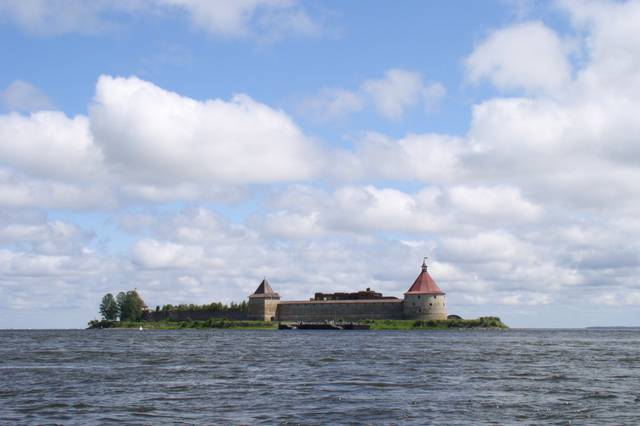
Day trips can be done on your own or via an organized excursion offered by many tour operators. Even though it is a lot to see in one day, Peterhof, Kronshtadt, and Lomonosov are all in the same general direction west of Saint Petersburg and are all accessible by hydrofoil, so it is popular to see all three sites in one day.
- Gatchina — Big palace and park in a beautiful village 50km south of Saint Petersburg.
- Kronstadt — Old seaport town on Kotlin island, 20 km directly north of Lomonosov. Main Russian naval base from early 18th century. You may take a hydrofoil back to the Hermitage for one-way.
- Lomonosov (Oranienbaum) — Park with museum honoring Michael Lomonosov. 9km west of Peterhof via the A121 highway. Train station name is Oranienbaum ('Orange tree' in German). TIP - You may also visit Kronstadt and take a hydrofoil back to the Hermitage for one-way, an inexpensive alternative to the more expensive ones leaving from Peterhof.
- Oreshek Fortess — a medieval russian fortess at Orekhovy Island in the mouth of Neva, 50 km east of Saint Petersburg.
- Pavlovsk — Lusicous green park where you could feed the squirrels from your hands. Can be reached by train from Vitebskiy station (not the main hall, but the smaller hall for local trains, which is on the right side as you face the station). Pavlovsk train station is close to the northwestern gate to the park, and from there it is a long (but pleasant) walk though the park to the palace.
- Peterhof — Home of the sumptuous "Russian Versailles" and to the "Petrodvorets Watch Factory - Raketa" (tours available), 30 km southwest of Saint Petersburg.
- Pushkin (Tsarskoye Selo) — 25 km south of Saint Petersburg, with beautiful parks and palaces, most notably the Catherine Palace built for Tsarina Catherine I.
- Repino — House-museum of the artist Ilya Repin, just off the Gulf of Finland, where he lived and worked. To get there: Elektrichka train from the Finlandsky Station (45 minutes, round trip fare, eleventh stop on the westbound line — check in advance to make sure the train you board stops in Repino — then from the station cross the main road and walk down the path to the left of the supermarket through a resort complex to the next major road. Turn left and walk about 1.5 km to the gate marked Penaty. The walk takes about 45 minutes. The museum and grounds close at 15:00, or earlier if there are no visitors.
- Staraya Ladoga — the first capital of Russia is a pleasant little village four hours away with an incredible wealth of historical sights, including its own stone kremlin and church frescoes by the hand of none other than Andrei Rublev.
- Vyborg — town situated on the Karelian Isthmus near the head of the Bay of Vyborg, 130 km to the northwest of St. Petersburg, 38 km south from Russia's border with Finland, where the Saimaa Canal enters the Gulf of Finland. Swedish built castle, started in the 13th century and extensively reconstructed by Russians in 1891–1894. Mon Repos, one of the most spacious English parks in Eastern Europe, laid out in the 19 century. Fortifications of the Mannerheim Line (built by Finland against the Soviet Union) are close by. Now available for day trips with high-speed rail.
[[Staraya Ladoga]] — the first capital of Russia is a pleasant little village four hours away with an incredible wealth of historical sights, including its own stone kremlin and church frescoes by the hand of none other than Andrei Rublev.
If you leave Russia and plan to return, make sure you have a multiple entry visa.
- Novgorod — Ancient town with churches and museums, 180 km from St. Petersburg, can be accessed by high-speed trains.
- Narva, Estonia — 160 km southwest of Saint Petersburg on the Narva river, which serves as the border between Russia and Estonia. Twin castles (Russian, established Grand Duke Ivan III, and Danish/Swedish).
- Vologda — this city is considered the heart of Russian North, a popular local travel destination. Reachable by overnight train, from there you can go to Moscow or further north to Arkhangelsk.
- Petrozavodsk and the rest of Karelia — popular Russian travel destination for its beautiful nature and access to White Sea islands. Reachable by overnight or high-speed train.
- Moscow — the Russian capital is reachable by overnight train or in the daytime by the high-speed Sapsan train (about 4 hr) or by plane. As much to see as in St. Petersburg, so plan on several days here.
